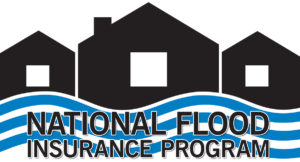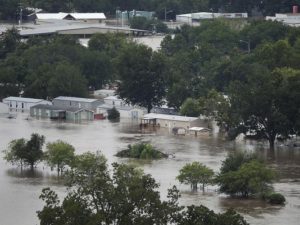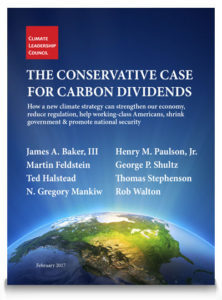Like everyone with a home mortgage, I have homeowner’s insurance that covers most catastrophes, although the list of covered catastrophes specifically does not include flooding.
 Occasionally I worry because my house backs right up to the San Antonio River. Fortunately, my yard and house are outside the boundaries considered to have a 1 percent chance of flooding per year, the so-called “100-year flood plain.” So up until now I’ve never had flood insurance, nor have I been required to have it by my bank.
Occasionally I worry because my house backs right up to the San Antonio River. Fortunately, my yard and house are outside the boundaries considered to have a 1 percent chance of flooding per year, the so-called “100-year flood plain.” So up until now I’ve never had flood insurance, nor have I been required to have it by my bank.
There was a bit of weather recently in Texas you may have heard about, which got me thinking again about flood insurance, and also about how reliable our current risk-assessment methods are.
As a financial rule, I’m usually in the “don’t buy too much insurance” camp, urging people to self-insure whenever possible. Or as the French might say, I adopt an “après moi, le deluge” approach to many insurable risks.
Flood insurance, however, might be in the special category of things for which self-insuring doesn’t work as well. Meaning, even though my house sits outside of the 100-year flood plain, I really cannot afford the unexpected but catastrophic loss of my house due to flooding.
I called up my insurance provider this past week to get a quote on flood insurance for my house. I learned a few things.
I received an annual premium quote of $499 for up to $250,000 in damage to my house, plus an additional $100,000 for personal belongings, subject to a $1,250 deductible in each loss category.
Interestingly, I learned my insurance provider is acting not as the underwriter of flood insurance, but rather as a broker for the federal government’s National Flood Insurance Program or NFIP administered by FEMA, the Federal Emergency Management Agency. [LINK:]
In fact, everyone has to go through a private insurance company to get this federal flood insurance. Almost nobody gets private flood insurance.
I mean, there’s also a private market solution, but barely. I went to one provider online and entered all my data to match the quote I got from my regular insurance provider. The annual premium would be $3,219. So, more than 6 times as expensive as the FEMA quote. With that difference, you can sort of see why the federal government dominates the market.
Matthew Hartwig, a spokesperson for insurance provider USAA, told me that their flood insurance call volumes rose up to 9 times their regular rates before, during, and after the landfall of Hurricane Harvey. Customer inquiries even now continue at a higher than normal rate.
Unfortunately, none of those flood insurance sales in late August and early September can help Hurricane Harvey victims, because of a 30-day wait rule, before recently-purchased flood insurance becomes effective. Buying now only helps for the next flood.
Interestingly, engineering and flood risk specialists are in the process of re-evaluating how we deal with flood risk these days.
The old way of risk assessment is to simply map out whether a property is, or is not, in a 100-year flood plain.
Patrice Melançon, Watershed Engineering Manager for the San Antonio River Authority, described to me at least a few engineering discussions underway in the wake of Harvey.
She cited her counterparts in Houston who are actively discussing whether the right level of “risky” should be to look closely at properties previously considered to be in a so-called “500-year flood plain,” or areas that have only a 0.2 percent chance of flooding per year.
 Of course, a common-sense reaction to that news is to wonder whether things have changed, possibly due to climate change, such that previous rainfall data informing the 100-year flood plain is no longer accurate in 2017.
Of course, a common-sense reaction to that news is to wonder whether things have changed, possibly due to climate change, such that previous rainfall data informing the 100-year flood plain is no longer accurate in 2017.
While FEMA still relies on maps that show the 100-year flood plain, they are developing – in conjunction with local partners like SARA – a more sophisticated set of maps that show the likelihood of flooding within 30 years, as well as the probabilistic severity of flooding inside and outside the 100-year flood plain, The new maps are “informational” and “consultative” rather than being used for regulatory purposes like the 100-year flood plain maps, but nevertheless represent the next level of risk-analysis.
I’ll be checking out those new maps. Even now, about 25 percent of flood claims occur on houses located outside of a flood zone. That’s on houses that are deemed safely outside the flood plain, like mine.
Finally, Melançon mentioned to me that SARA expects to receive, in another 3 or 4 weeks, updated computer modeling and analysis of what would occur if Harvey-level rainfall dumped on the city of San Antonio. I’m pretty interested in those results too.
Personally, I don’t want to pay $500 to protect against a thing that’s never going to happen.
On the other hand, a “thing that’s never going to happen” just happened all over the city of Houston and in towns up and down the Texas coast. And four different Category 4 and 5 hurricanes were never going to make landfall within four weeks of each other until Hurricanes Harvey, Irma, Jose and Maria actually smashed all normal expectations of weather patterns.

So, yeah, we’re buying flood insurance.
As a scary epilogue to this story, you know what else is not covered by regular homeowner’s insurance? Property damage due to nuclear war. And I know that’s never going to happen either, right? Anyway, enjoy your morning coffee with breakfast, everybody.
A version of this post ran in the San Antonio Express News and Houston Chronicle.
Please see related posts:
Insurance Part 1 – Risk Transfer Only
Insurance Part 2 – The Good, The Optional, and the Bad
Insurance Part 3 – Life Insurance Calculations
Post read (118) times.



